A diverter shower is the perfect solution if you have a bathtub but no shower. Unscrew your old tub faucet, screw in a new tub diverter faucet and then attach a shower hose and head. No wall smashing, no plumbing, no $$$$$. Here's how ...
When I bought my rental property after having paid off my own mortgage I bought it *almost* sight unseen. The house belonged to a neighbour of mine and I purchased it from their estate. I didn't even do a walk through. I bought it just from my memory of being in the house a few times.
The house had never been really updated but it wasn't falling apart, it had good bones and it was close by. Those were the things I knew about it. What I didn't know were the little things.
Like the fact that there was no shower.
In my very extensive research I've found that more people than you'd think bathe. Sometimes daily. And most of them prefer to do it with water raining down on them as opposed to basting in their own dirt in bathtub water.
I had another "as luck would have it" moment when I started stripping the bathroom wallpaper and realized the drywall hadn't been primed before the room was wallpapered. That meant when I stripped the wall paper, all the drywall paper came off with it which in turn meant I was going to have to skim coat the entire bathroom.
I ate McDonalds for dinner and that night. It seemed like the right thing to do.
This shower situation was going to have to be fixed but I didn't want to get into a huge "thing". I didn't want to have to smash out the drywall and have a plumber install a shower pipe. I didn't want to have to smash the tile for the same reason. I didn't want to get into another big job of retiling.
I wanted an easy solution for installing a shower. So I started to search for alternatives and found the idea of a shower diverter.
A shower diverter, (also known as a diverter valve or a tub diverter or a spout diverter) does exactly what it sounds like. It diverts the water from the tub spout to something else - in this case a shower head.
A tub diverter spout has an extra bib on it that you can screw in a handheld shower hose. So you replace your old tub spout with a spout with a diverter and BAM you're minutes away from installing a shower.
Once you screw in a shower hose and handheld shower into the diverter - YOU'VE GOT A SHOWER.
Installing a shower diverter
MATERIALS
Hand held shower kit with line
Wall mounted shower head bracket
Hacksaw and/or Dremel
Metal file
- Remove the old tub spout. It will either simply unscrew off or there will be a small screw on the underside that you can loosen and then slip the faucet off. Mine unscrewed.

old spout 
new diverter spout
Beneath the old spout on my tub was a plastic extender that was needed. The extender can be removed as well if it's no longer needed for the new faucet.
Would you like to save this stuff?
2. Remove the old silicone.
3. Using the measurements that came with your new diverter spout, check to see if you need to extend or shorten the pipe coming out of the wall.
I needed a very small amount of threaded pipe out from the wall so I had to shorten the pipe.
3. Mark the pipe at the length you need then using a hacksaw or Dremel cut the pipe, being careful to cut it STRAIGHT. If you don't cut it straight it won't thread properly.
I started off using a hacksaw but then needed to straighten up the cut using a Dremel.
4. Use a file to clean up and smooth the edges of the newly cut pipe then wrap it with plumbing tape.
5. Refill the gap around the pipe with silicone (specifically tub and shower silicone.)
6. Once it has dried screw in the new tub diverter and silicone around the edge.
Unless there are miracles flying around that hit you in the head, chances are the spout won't fit perfectly to the wall. Or it might be a bit wonky and off kilter with a bit of a gap on one side or the other. Don't worry about it. This is not what you'd call a high end renovation.
It's a quick and easy fix for showers at the cottage, rental property or cabin.
To engage the shower, you pull up on the faucet knob which engaged a rubber stopper. That stopper blocks the water from coming out of the faucet and forces it to the shower.
7. Once the silicones have set you can screw on a handheld shower hose and handheld shower to the faucet.
The wall mounted bracket I bought is a Moen that matches the handheld shower kit I bought. However, it took me a couple of months to get it and I think it's discontinued or close to it. Either way, my exact bracket will be difficult for you to find, but there are a lot of wall mounted shower bracket options.
8. Screw a wall mounted handheld shower bracket to the wall. If your shower wall is tile you can also get suction cup/adhesive backed brackets. The shower head should sit 74" - 80" above the floor.
If your handheld shower kit came with a bracket, chances are it won't be the right one. It will probably be a bracket that screws into an existing shower pipe coming out of the wall. Which you do not have.
For a total cost of about $70 and an hour or so (there was probably an additional hour that was dedicated to fretting) I installed a shower.
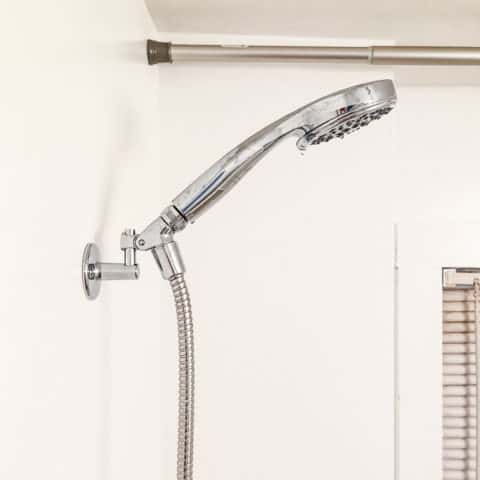
Installing a diverter shower
Install a shower in about an hour by using using a tub diverter.
Materials
- Tub diverter
- Hand held shower kit with line
- Wall mounted shower head bracket
- Tub and tile silicone
Tools
- Hacksaw and/or Dremel
- Metal file
- Razor or box cutter (for removing old silicone)
Instructions
- Remove the old tub spout. It will either simply unscrew off or there will be a small screw on the underside that you can loosen and then slip the faucet off.
- Remove the old silicone.
- Using the measurements that came with your new diverter spout, check to see if you need to extend or shorten the pipe coming out of the wall.
- Mark the pipe at the length you need then using a hacksaw or Dremel cut the pipe, being careful to cut it STRAIGHT. If you don’t cut it straight it won’t thread properly.
- Use a file to clean up and smooth the edges of the newly cut pipe then wrap it with plumbing tape.
- Refill the gap around the pipe with silicone (specifically tub and shower silicone.)
- Once it has dried screw in the new tub diverter and silicone around the edge.
- Once the silicones have set you can screw on a handheld shower hose and handheld shower to the faucet.
- Screw a wall mounted handheld shower bracket to the wall. If your shower wall is tile you can also get suction cup/adhesive backed brackets. The shower head should sit 74″ – 80″ above the floor.
Notes
* The amount you need to add or remove from the pipe coming out of your wall will depend on the tub diverter you buy.
* Always seal around any holes or gaps between the wall and your spout with tub and tile silicone.
The renters could now bathe and I could relax and spend my time and money on more fun things. Like radon testing! Repairing the old roof, installing new flooring, updating the bathroom, painting the house, ripping out the carpeting on the porch (?!), keeping the lawn mowed and weeded and figuring out why the thermostat hates me.
I also might (when I have time) want to look into therapy so I can get to the bottom of why I don't find relaxing to be relaxing. It seems like a smarter place to put my money than behind a bathroom wall.
→Follow me on Instagram where I often make a fool of myself←


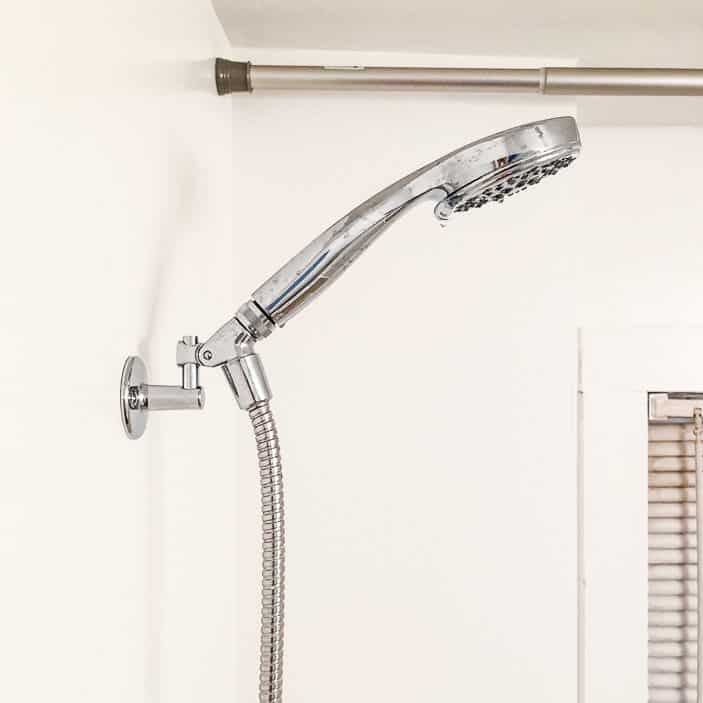

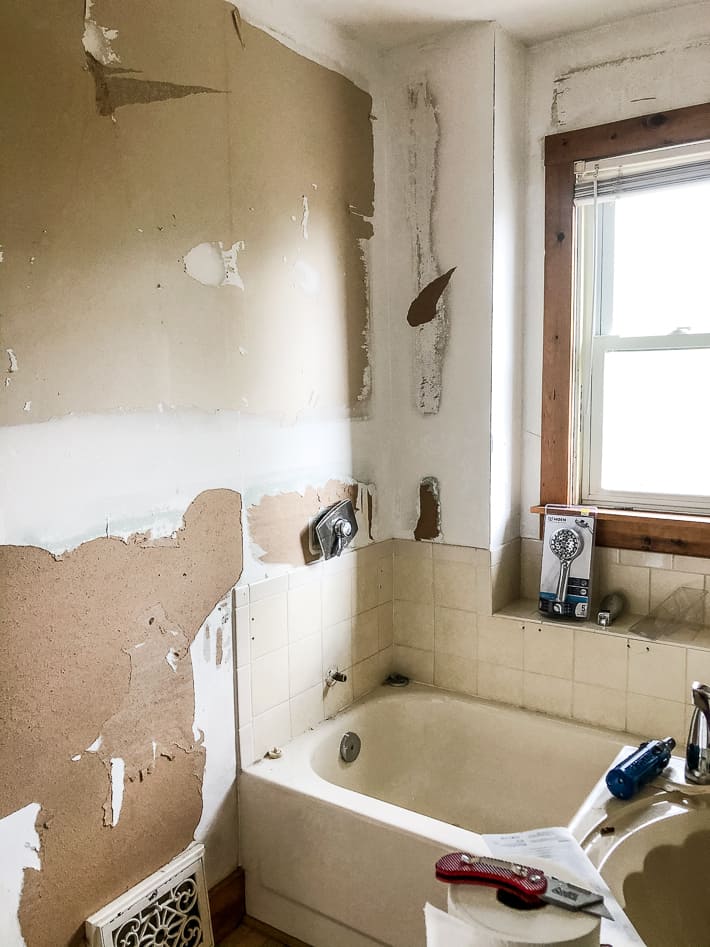
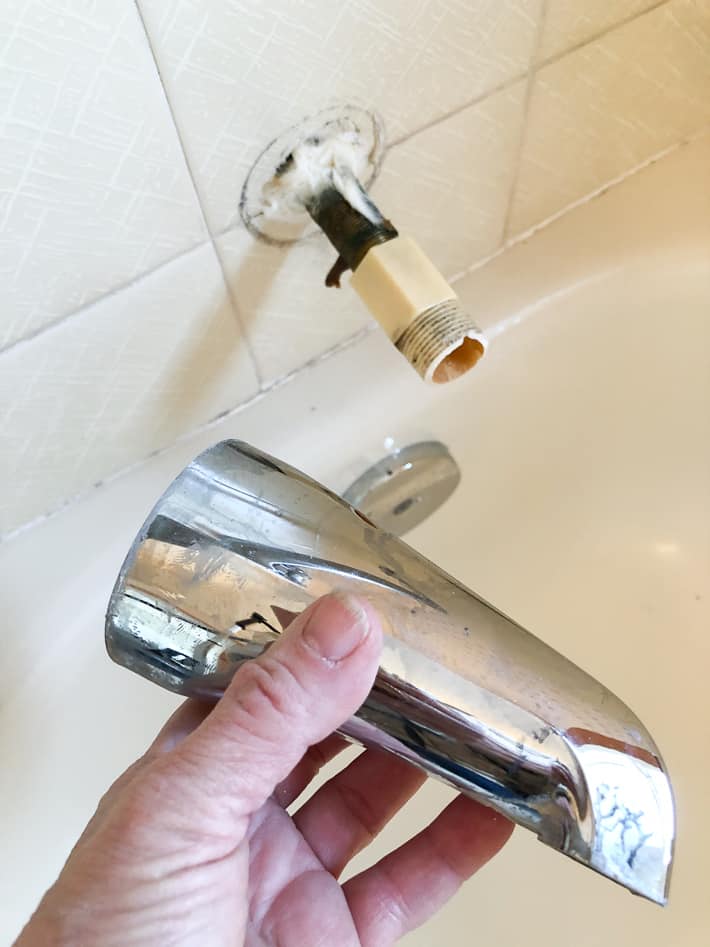

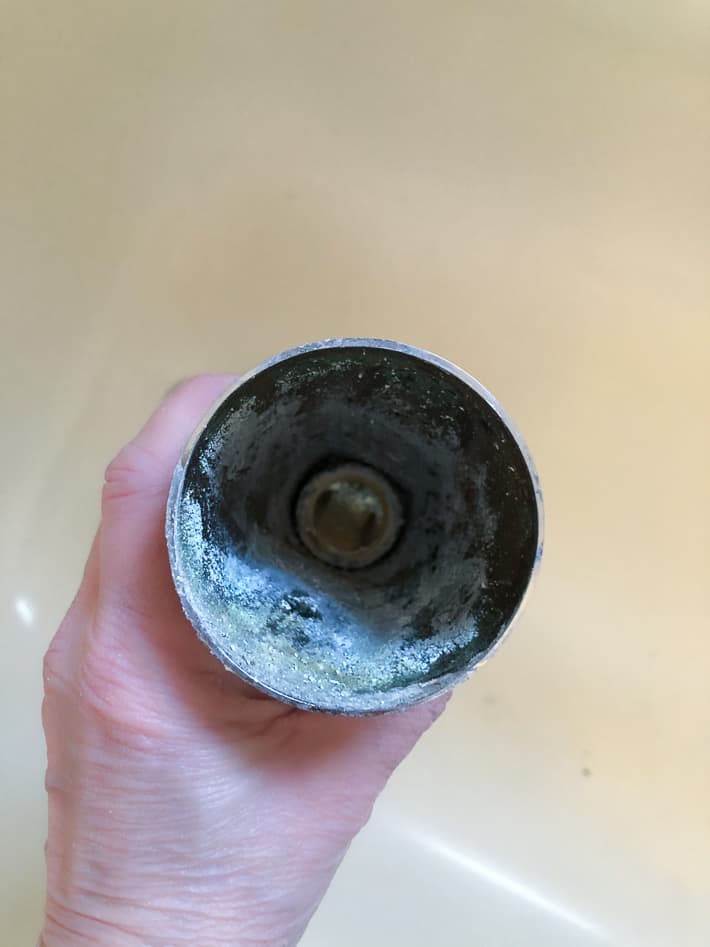
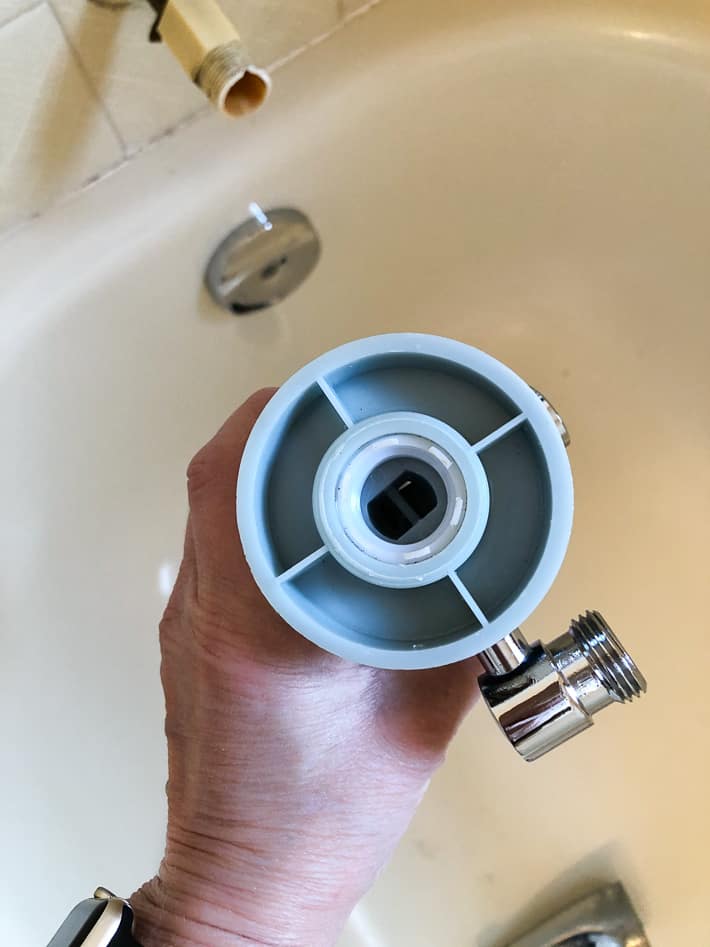
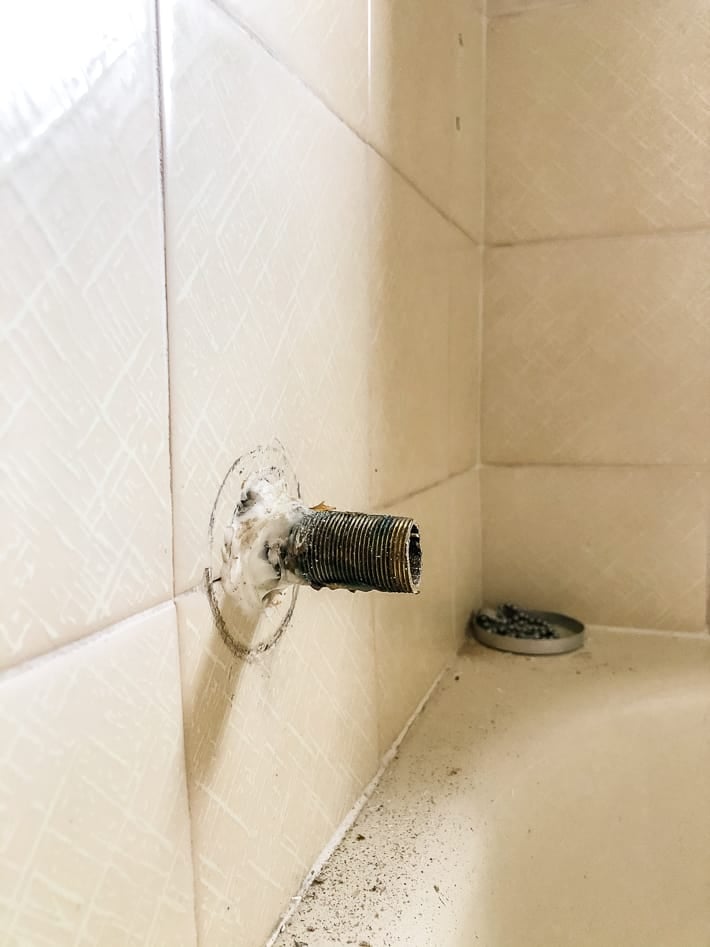
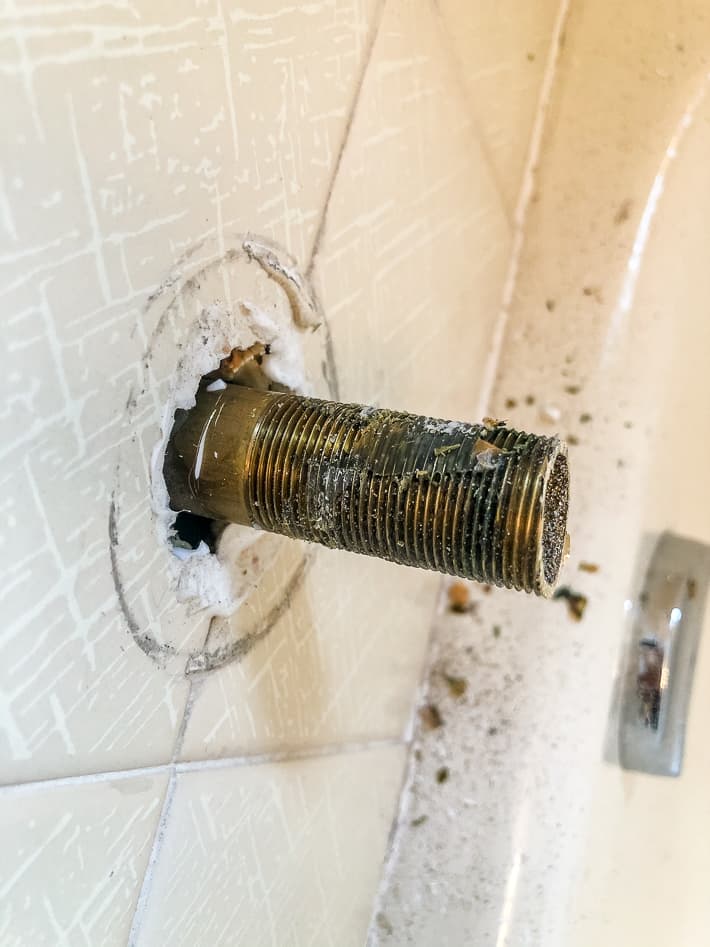
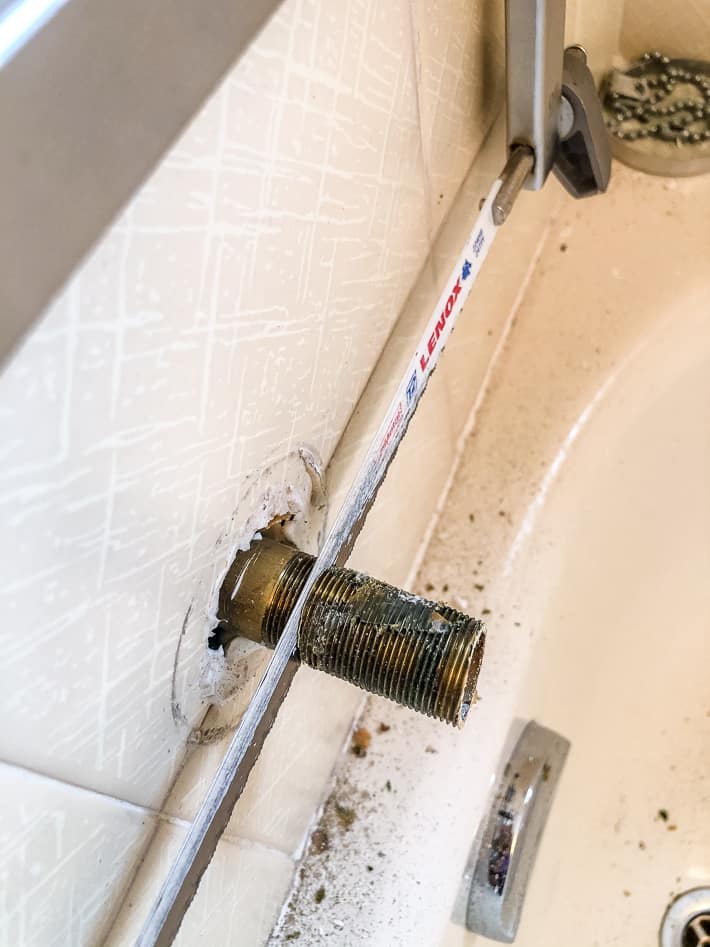
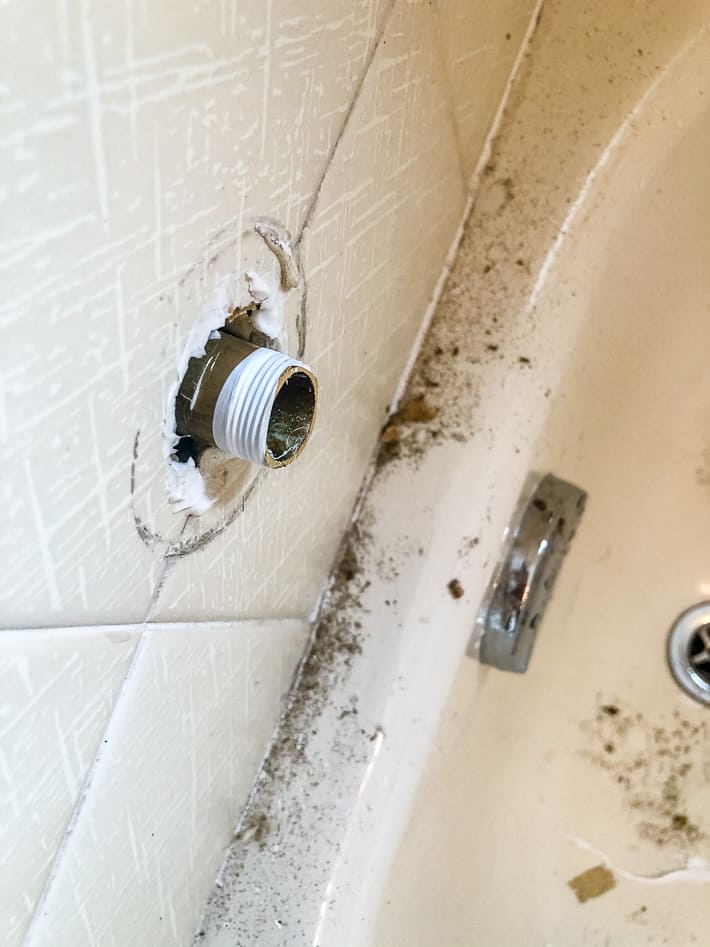
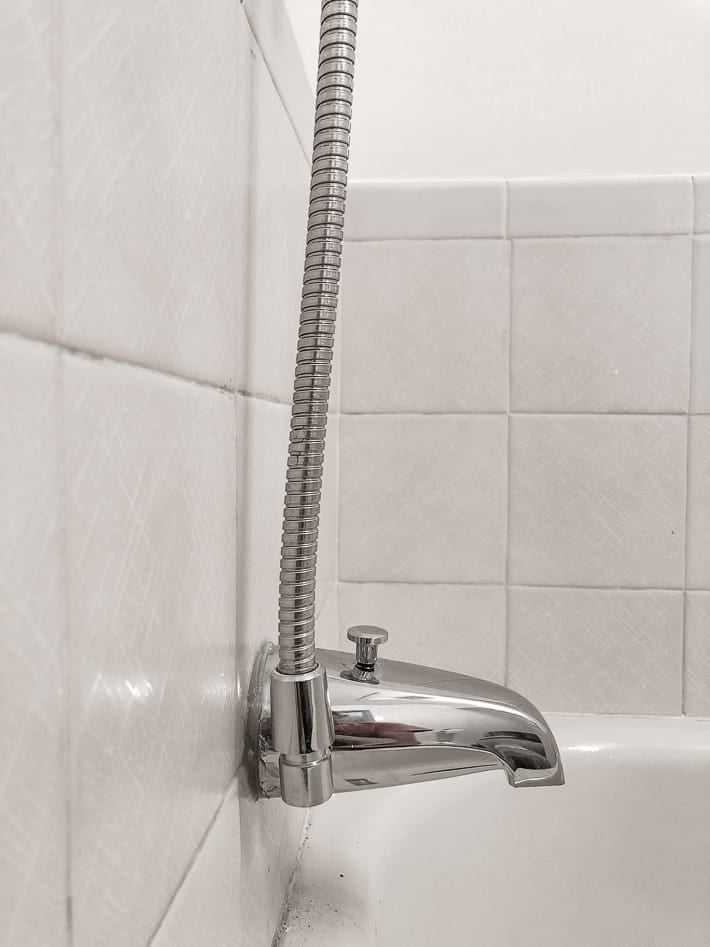
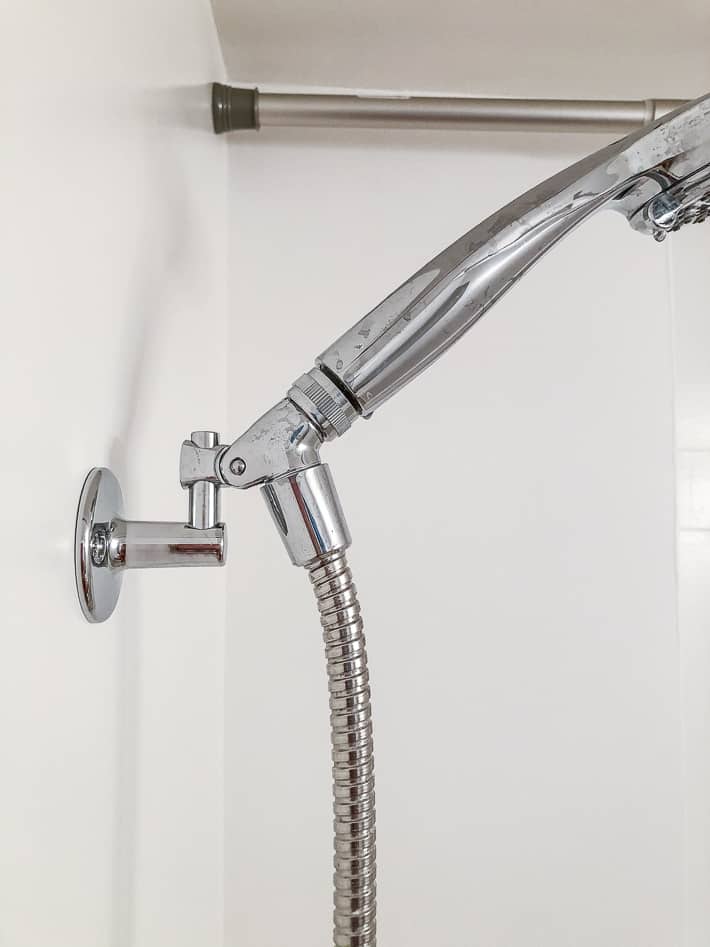
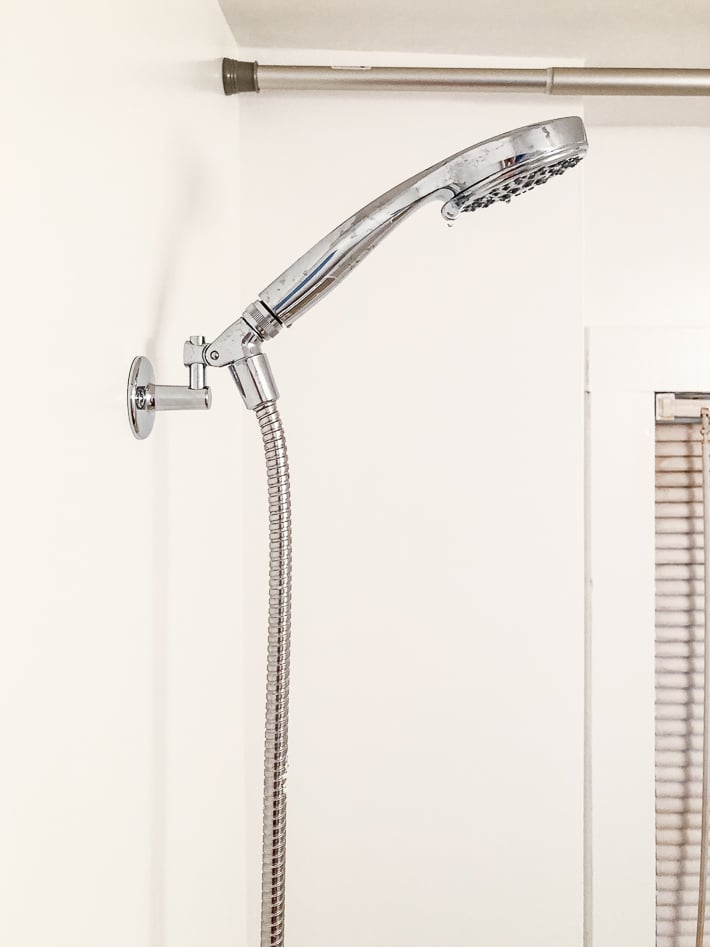




Sonia
Thank you, thank you, thank you! My plumber wanted $1,000 to fix my broken shower, including knocking out my perfectly good, 1950s, tile. I knew I had seen you do this so I thought why not give it a go. I know absolutely nothing about plumbing and I am not a DIYer at all, but now, thanks to you my guests will not be nearly so stinky during their visits. Still pinching myself that this actually worked.
Iwona
Well, diverter showers is what we usually have in my country (Europe), I was surprised at first seeing fixed piping in America/Canada. And there are usually special rods so you can affix the sprayhead at the height you want for yourself/a child/a bigger person.
Mark
"more people than you’d think bathe"
WHO KNEW!!!!
Thank you for being the font of knowledge!
Colleen
I love your blog!!! You are such an inspiration.
I have been a DIY girl for 30 years who also doesn't find relaxing relaxing :-)
Jacquie Gariano
That's a great idea and it would be great at the cabin in Maine. Only problem is my son-in-law has taken apart the drain plug in the sink or about a month ago and it is still not working. The parts are all over the counter. He has tried several times to fix it and each time it hasn's done the trick so he leaves it till the next time he gets the urge to try. It does let the water drain out, thank goodness, but I can't plug the sink. Unfortunately, I can't do it due to arthritis in my hands or I'd be under there.....LOL
Patty
Soooo. I noticed the tile doesn’t go very high. Are you leaving the untiled part of the wall exposed to the water coming from the shower? Isn’t that asking for a WHOLE lot of problems?
Jan in Waterdown
I couldn’t help but think about the window being part of the shower now and the inevitable mold. Is that a shower curtain rod on the back wall to hopefully prevent that? After doing 2 bathroom total gut/renos with my handy guy, I notice stuff 🙄
Deb from Maryland
Brilliant answer to a need. You truly need to be buried in projects to have a good time. You were doing this all the while keeping us entertained with the Art of Fun. You're a beast!
G. Bruce Chapman
Perfect timing! I'm doing this today - or tomorrow - or sometime this week - procrastinating is my specialty. ;-) My only worry is that the pipe will break when I try to unscrew the tub spout.
Karen
If it's screwed on it shouldn't break, but yes, these are the chances we take when self plumbing. :/ ~ karen!
TucsonPatty
My sister needs this in her bathtub. For when I come to visit her. She can at age 75, still sit in the bottom of the tub and get right up and out. I choose to sit upon a short plastic folding stool in the tub. I will try to find this for her, and help her install it next time I visit. Thank you, thank you! <3 <3 <3
whitequeen96
Brilliant! While I'll probably never need to actually install one of these, I'm sure someone in my future will. Thanks to you, I'll get to sound so wise/experienced - I just love that! ;-)
Alex
This reminds me of the house I lived between the ages of 4 and 14 - we had a fixed shower pipe from the tap. The tap was switched to shower by using a cork from a champagne bottle..
It worked well unless the water water pressure was a bit much or small child hands didn’t put the cork in far enough and then there was a mid shower switch
Margaret K.
We installed a hand-held shower in a similar tub set-up at a relative's house, but we mounted it low so the bracket only serves as a storage rack for the shower head. It can only be used as a hand-held. We were afraid that a shower mounted higher would get spray on the drywall - the bath had a relatively short tile surround, as yours does. Did you treat the untiled wall somehow?
Karen
I did. I talk about that in an upcoming post. :) All I did was paint the drywall with 3 coats of oil based paint. ~ karen!
Cristina
Just curious if four year later the three coats of oil based paint is still protecting your walls. I bought some pvc sheets to glue on but would rather not because they are ugly. Any updates?
Karen
I do have an update! The walls made it through 2 years with a family of 4 using it perfectly. The next lady in the house had issues with peeling after about 1 year in the house. I think this could have been prevented by a better sealing job on my part. I replaced it with similar PVC sheets. :/ ~ karen!
LOIS M BARON
I love it when people have invented stuff to fix problems that I never knew existed. So glad you shared this solution. Also, does the hacksaw make a horrible screeching noise when you're cutting pipe? Asking for a friend.
Karen
Not that I noticed, but I might not be bothered by that sound and therefore didn't notice, lol. Tell your friend. ~ karen!
Kippy
I love your tutorials! Re new products, an IG DIY account I follow showed a product called Mussel Bound used for tiling walls. No need for mortar! Now I almost wish I had a tiling project to try the stuff.
Jamie Hilly
my shower switch is not the handle on top of the faucet that you pull upend down its where the water comes out of the faucet. there are no comment or videos on how to get the water to come out of the shower head. Any ideas?
Laura g
you mean the diverter is on the bottom of the tub spout? If that's the case typically you'll pull the diverter section down or twist it. But it will vary depending on manufacturer.